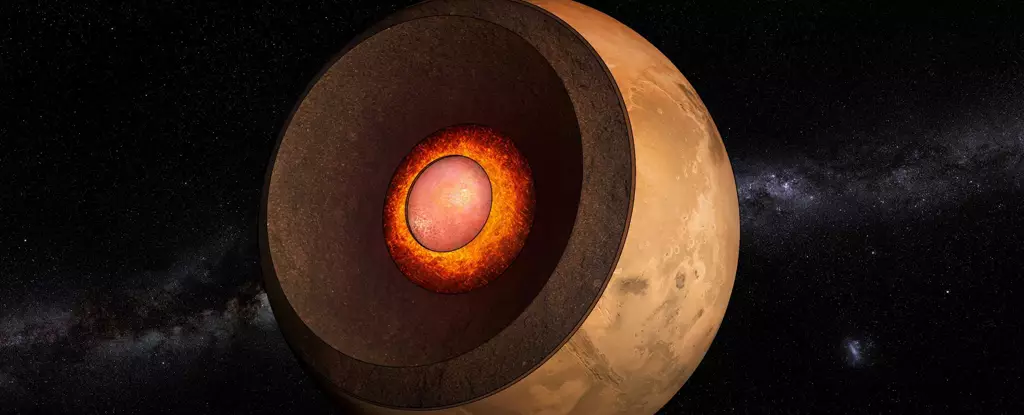Mars, often referred to as the Red Planet, has long fascinated scientists and space enthusiasts alike. While its dusty exterior may give the impression of a barren and unchanging world, recent seismic data collected by the Mars InSight lander has shed light on the surprising composition of Mars’s interior. Unlike any other planet besides Earth, Mars’s interior structure has been probed through seismic activity. This seismic data has not only provided insights into the planet’s history but also raises questions about our previous understanding of Mars.
Between 2019 and 2022, the Mars InSight lander detected hundreds of quakes rumbling through Mars. These quakes, like seismic activity on Earth, allowed scientists to analyze the waves that propagate through the planet and reflect off different materials, revealing its internal structure. Initially, a map based on early data suggested that Mars had a large core with a relatively low density, indicating the presence of lighter elements mixed in. However, the more recent research based on a larger dataset, including seismic events resulting from meteorite impacts, presented a different story.
Geophysicist Amir Khan of ETH Zürich and geophysicist Henri Samuel of the French National Centre for Scientific Research (CNRS) led separate studies that strengthened our understanding of Mars’s interior. Both studies found evidence of a molten rock layer approximately 150 kilometers thick surrounding the core. This new finding suggests that the core is smaller than originally estimated, with a radius between 1,650 and 1,675 kilometers. This revised core size aligns more closely with previous estimates and indicates a higher density, eliminating the need for significant amounts of lighter elements.
The revelations about Mars’s interior composition have significant implications for our understanding of Martian history. The larger core with a lower density, as previously hypothesized, was linked to the loss of Mars’s global magnetic field. The new findings, with a smaller and denser core, challenge our previous assumptions. By unraveling the composition of Mars’s core, scientists can begin to decipher the planet’s history and evolution. Clues from the core’s composition may provide insights into why Mars transformed into its current state: a dusty, arid, and lifeless planet.
While both studies agree on the molten nature of the layer surrounding the core and its size, they present differing theories on how it came to be. The researchers’ conclusions pave the way for future investigations that could shed more light on the mysterious history and evolution of Mars. By further refining our understanding of Mars’s interior, scientists may unlock even more secrets about the planet’s fascinating past.
The seismic data collected by the Mars InSight lander has unveiled remarkable insights into the interior composition of Mars. With a layered and surprisingly squishy structure, Mars challenges our previous assumptions about the planet. The presence of a molten rock layer surrounding a smaller, denser core not only aligns with our understanding of Mars’s chemical composition but also opens doors to understanding its captivating history. As future research continues to unravel the mysteries of Mars, humanity may come to better comprehend the Red Planet’s enigmatic journey through time.


Leave a Reply